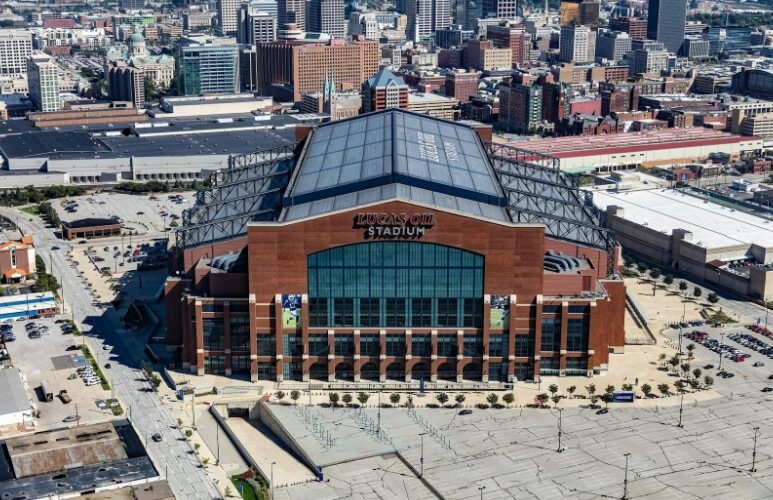When it comes to roofing, commercial and residential properties have distinct needs that require different approaches. Understanding the key differences between commercial and residential roofing is essential for property owners and managers looking to make informed decisions about their roofing systems.
From the materials used to the installation process, maintenance needs, and design considerations, commercial and residential roofs serve vastly different purposes and come with unique challenges. Whether you’re in charge of a sprawling commercial complex or looking to upgrade your home’s roof, knowing the specifics of each type can help you choose the right solution.
In this post, we’ll explore the six key differences between commercial and residential roofing, offering you valuable insights into their features, benefits, and drawbacks. Let’s get started.
Roofing Materials
Commercial and residential roofs require different materials due to varying design, size, and functional needs. Residential roofs often use asphalt shingles, tiles, or metal for their durability, aesthetic appeal, and affordability. On the other hand, commercial roofs are commonly constructed with flat surfaces, utilizing materials such as TPO (Thermoplastic Olefin), EPDM (Ethylene Propylene Diene Monomer), or modified bitumen.
These materials are chosen for their ability to withstand larger environmental stresses, offer longer-lasting protection, and provide superior energy efficiency. Roofing experts have a deep understanding of the best materials to use for commercial properties, ensuring they can meet both the functional and regulatory requirements.
Expertise and Experience
While both residential and commercial roofing require skilled professionals, the expertise needed for commercial roofing is more specialized. Commercial roofing systems are larger, more complex, and require compliance with stricter building codes and regulations. As seen at www.aaarfg.com/locations/los-angeles-ca/, commercial roofing experts have the necessary knowledge to address the challenges that come with these systems. Their experience ensures that they can handle everything from large-scale installations to navigating permits, safety standards, and specialized materials.
Residential roofing professionals, while highly skilled, typically focus on simpler, smaller projects that demand a different set of expertise. The expertise required for residential roofing revolves more around aesthetic considerations, efficient installation of common materials like shingles or tiles, and ensuring the roof complements the home’s overall design.
Roof Design and Structure
The design and structural requirements of commercial and residential roofs differ significantly. Residential roofs typically feature steeper slopes to allow water runoff and to enhance curb appeal, while commercial roofs are generally flat or low-pitched to maximize usable space. Commercial roofs often have to support heavy equipment like HVAC units, which necessitates additional reinforcements in both the roof and the structural framework.
Residential roofs, by contrast, focus more on aesthetics and the ability to integrate with the surrounding landscape. In commercial properties, the roof’s primary role is to protect the building’s infrastructure and accommodate business functions without compromising on accessibility.
Roof Installation Process
The installation process for commercial and residential roofs differs greatly in terms of complexity, labor, and time requirements. Residential roof installations tend to be faster because they involve simpler designs, smaller areas, and less specialized equipment. In contrast, commercial roof installations often cover larger areas and require specialized materials, such as waterproofing and insulation layers.
The complexity of these systems also means that commercial installations take longer, often involving the coordination of multiple contractors. The need for careful planning, including the use of heavy equipment for material transport and adherence to safety regulations, ensures the project is completed efficiently and on time, without disrupting business operations.
Maintenance Needs
Maintenance is an essential aspect of both commercial and residential roofing systems, but the scope and frequency of care vary greatly. Residential roofs generally require periodic inspections and repairs, especially after severe weather events. The need for maintenance often revolves around replacing damaged shingles or tiles and checking for leaks.
Commercial roofs, however, require more consistent and proactive maintenance due to their larger size, flat surfaces, and the presence of equipment. Regular inspections, cleaning of drainage systems, and repair of any membrane or insulation damage are crucial to maintaining the roof’s integrity and preventing costly leaks or damage.
Cost Differences
Cost is one of the most significant differences when comparing commercial and residential roofing. Residential roofing is usually more affordable due to smaller roof areas and the use of less expensive materials like asphalt shingles. In contrast, commercial roofs tend to be more expensive due to the larger scale, the use of specialized materials, and the complex installation process.
Additionally, commercial roofing systems often require more advanced features, such as built-in drainage, insulation, and waterproofing layers, which add to the overall cost. However, commercial roofs are designed for durability, which can lead to fewer long-term maintenance costs and a longer lifespan compared to residential roofs.
Understanding the key differences between commercial and residential roofing is essential for making informed decisions about roof installation and maintenance. While both types require skilled professionals, commercial roofing involves more complexity, larger areas, specialized materials, and stricter regulations. Residential roofing, on the other hand, is typically quicker and simpler, focusing on aesthetics and efficiency. Whether you’re managing a commercial property or upgrading your home, choosing the right roofing solution is crucial for ensuring durability, cost-effectiveness, and long-term performance. Proper planning, expert advice, and attention to detail are key to achieving a roof that meets your needs.
